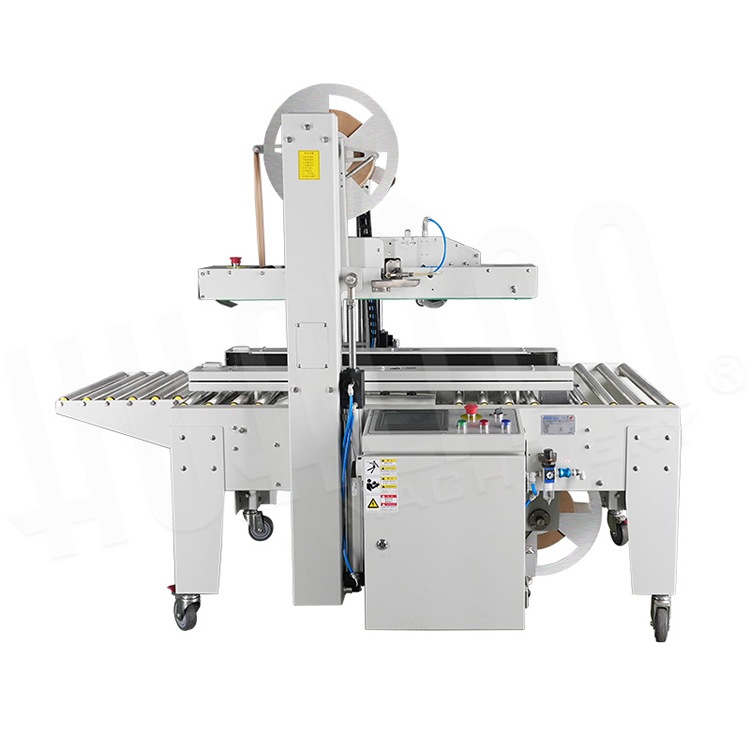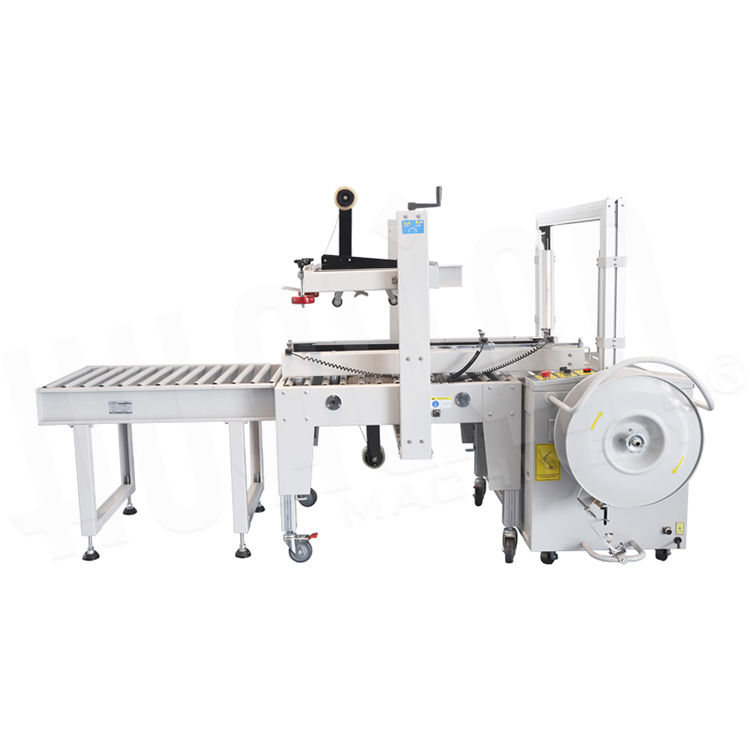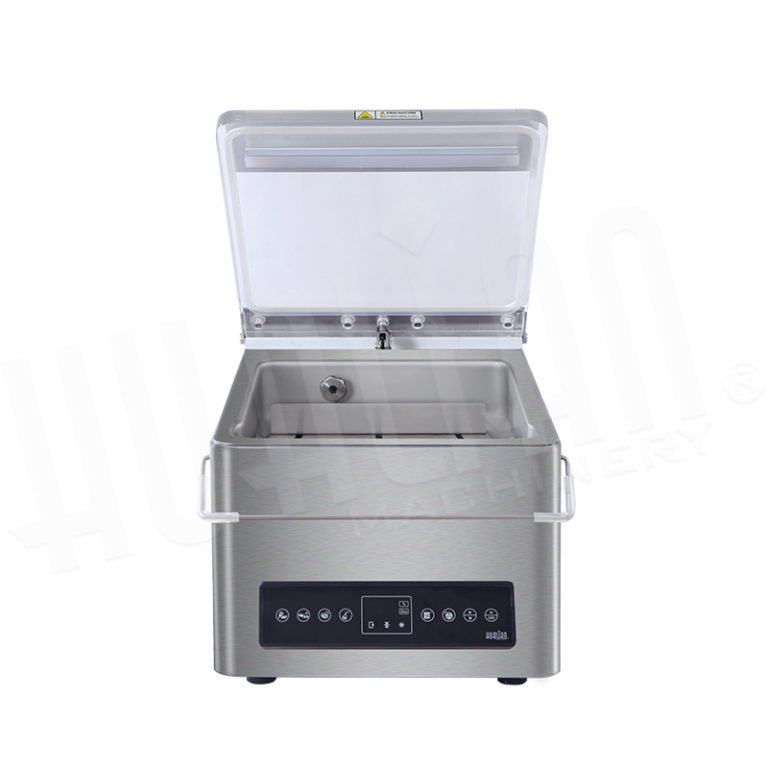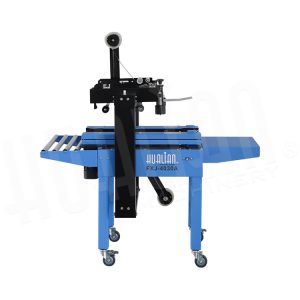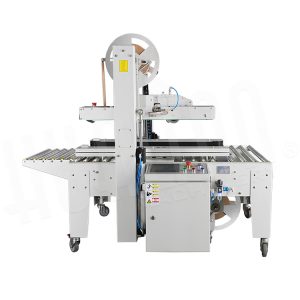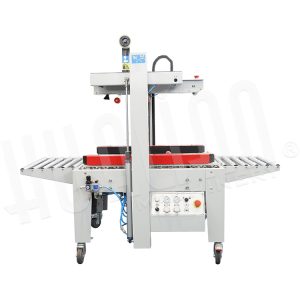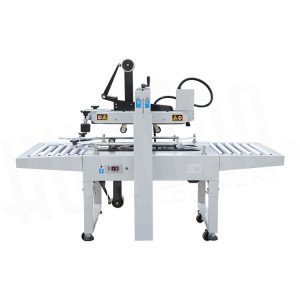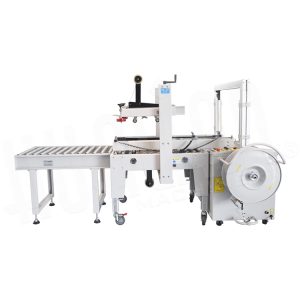In today’s industrial sector, the efficiency of packaging processes directly impacts a company’s production capacity and market competitiveness. Whether it’s a small business or a large manufacturing plant, quickly and accurately filling products into packaging bags is no easy task. This is where bagging machines truly shine. They not only enhance production efficiency but also minimize human error. This guide will provide you with a comprehensive understanding of these devices and help you find the bagging machine solution that best suits your business needs.
Table of Contents
ToggleWhat Is a Bagging Machine?
A bagging machine, also known as a bagger machine or bagging system, is an industrial device used to automatically or semi-automatically fill packaging bags with a specified quantity of products. It is an essential component of packaging production lines across various industries, capable of handling a wide range of products, from powders and granules to seeds and pet food. This type of equipment ensures accurate weight measurement, accelerates packaging speed, and reduces labor costs, making it a core device widely adopted in modern manufacturing.

Explore Our Bagging Machine Now!
Why Is Efficient Bagging Crucial?
Efficient bagging is all about speed, accuracy, safety, and profitability. A reliable bagging system ensures that each bag is filled with the correct amount of product, reducing waste and avoiding customer complaints. At the same time, it reduces the risk of injury caused by manual handling and filling, making the work environment safer. A modern bagging machine can increase production, reduce operating costs, and improve the overall quality of the finished product.
How Does a Bagging Machine Work?
The basic process of a bagging machine typically includes the following steps:
Product Feeding: Raw materials are fed into the bagging machine from a hopper or silo.
Weighing/Dosing: The quantity of the product is precisely measured, with measurement methods based on weight, volume, or a combination of both.
Bag Handling: Empty bags are provided by a bag placing machine and await filling. The filling process can be manually performed by an operator or automatically completed by an auto bagger or automatic bagging machine.
Filling: The measured product is loaded into the bags.
Sealing/Closing: The filled bags are sealed, stitched, or closed using other methods to prevent leakage.
Discharge: The finished bags are output from the machine and proceed to subsequent palletizing or transportation stages.
Different types of bagging equipment vary significantly in automation levels, ranging from manually assisted systems to fully automated automatic bagging machines, which can be selected based on production requirements.
Different Types of Bagging Machines
Bagging machines can be classified in many ways, but the most common method is to distinguish them based on bag type and automation level.
Categorization by Bag Type
Open-Mouth Bagging Machines
These machines are specifically designed for filling open-top bags. During operation, the bag is placed on the nozzle, filled with product, and then sealed using a sewing head or heat sealer. They are highly versatile and can handle a wide range of products and bag materials, making them very popular in the packaging industry for granular products such as grains, sugar, and fertilizers. Open-mouth bagging machines can be either semi-automatic or fully automatic.

Upgrade Your Production Line With Our Open-Mouth Bagging Machine!
Valve Bagging Machines
Valve bagging machines are suitable for packaging bags with a small opening (valve) at one corner. The product is filled into the bag through the valve, and when the bag is full, the weight and pressure of the product itself will automatically seal the valve. This design is particularly suitable for fine powder materials such as cement, flour, and chemicals, as it effectively reduces dust and spillage. Valve bagging machines are widely used in related industries.
Form-Fill-Seal (FFS) Machines
FFS machines are the most integrated and efficient bagging systems available. They start with a roll of film, form the bag, fill it with product, and seal it—all in one continuous process. This eliminates the need for pre-made bags, making them ideal for high-speed production lines for products such as coffee, snacks, and pet food. FFS machines are also highly flexible in terms of bag size and design, making them the perfect choice for modern bagging systems.
Categorization by Automation Level
Manual Bagging Machines
These are the simplest and most economical bagging solutions. Operators manually weigh the product and bag it, making them suitable for very small batch production or special applications that cannot be automated. As basic bagging solutions, they are still very practical in specific scenarios.
Semi-Automatic Bagging Machines
Semi-automatic systems can automatically perform weighing and filling, but require an operator to manually place the packaging bag on the nozzle and remove it after filling is complete. For companies with moderate production volumes, this is an excellent compromise, offering significant improvements in speed and accuracy compared to manual operations. As a result, semi-automatic systems are highly popular in many production environments.
Automatic Bagging Machines
Automatic bagging machines can complete the entire process from bag placement, filling, to sealing with minimal human intervention. These systems are typically integrated with bag placing machines and are designed for high-speed, high-volume production, offering the highest levels of efficiency and consistency. For specific weight products such as 25kg bagging machines, automatic systems can achieve very high output rates, making them ideal for businesses requiring large-scale operations.

Explore More Automatic Bag Placing Machines!
Key Considerations When Choosing a Bagging Machine
Selecting the appropriate bagging machine requires comprehensive consideration of multiple factors, primarily including:
| Consideration | Details |
| Product Characteristics | Flowability, bulk density, dust content, particle size. (e.g., Fine powder vs. granules require different systems.) |
| Bag Specifications | Bag type, size, and material (e.g., Paper, plastic, PP woven). Capacity (e.g., 25kg bagging machine or larger). |
| Production Requirements | Desired output (bags per hour) to determine if a semi-automatic or automatic bagging machine is needed. |
| Operational Environment | Adaptability to conditions like dust, humidity, or explosive atmospheres. |
| Budget & ROI | Upfront cost vs. long-term savings in labor, efficiency, and waste reduction. |
| Manufacturer Support | Availability of installation, training, and reliable after-sales service. |
Product Characteristics
The flowability, bulk density, dust content, and particle size of the product will determine the required filling method. For example, fine powder and granular products require different systems.
Bag Specifications
Consider the type, size, and material of the bags—paper bags, plastic bags, woven polypropylene bags, or composite bags. Do you need a 25kg bagging machine or a larger-capacity device?
Production Requirements
The expected output (number of bags per hour) will help determine whether to choose a semi-automatic or automatic bagging machine.
Operational Environment
Is the factory dusty, humid, or explosive? The machine must be able to adapt to these special environments.
Budget and ROI
Industrial bagging machines are a significant investment, requiring an assessment of upfront costs versus long-term savings in labor, efficiency improvements, and reduced waste.
Manufacturer Support and After-Sales Service
A reputable manufacturer not only provides high-quality industrial bagging machines but also offers installation, training, and ongoing technical support to ensure the equipment operates reliably over the long term.
When selecting a bagging machine for sale on the market, considering the above factors will help you find the most suitable solution for your production needs.
Benefits of Investing in a Modern Bagging System
Investing in a new bagging system can transform your operations. The benefits include:
- Increased Production Speed and Throughput: A modern machine can fill bags much faster than manual labor, dramatically increasing your daily output.
- Improved Accuracy and Consistency: Automated systems ensure each bag contains the precise weight, reducing product giveaway and ensuring customer satisfaction.
- Lower Labor Costs: Automation reduces the number of employees needed for the bagging process, allowing you to reallocate staff to other tasks.
- Enhanced Worker Safety: Bagging machines eliminate the strenuous and repetitive tasks of manual lifting and filling, reducing the risk of workplace injuries.
- Better Product Quality and Presentation: Consistent filling and professional sealing lead to a more attractive and reliable final product.
Industries That Rely on Bagging Machines
Bagging machines are the backbone of packaging for numerous industries, including:
- Agriculture: Fertilizers, seeds, grains, animal feed.
- Food & Beverage: Sugar, flour, rice, coffee, pet food.
- Chemicals: Powders, pellets, resins, various chemical products.
- Construction: Cement, sand, plaster.
- Mining: Minerals, aggregates.
Maintenance and Troubleshooting Tips for Your Bagging Machine
Proper maintenance is key to the longevity and performance of your bagging equipment.
- Regular Cleaning: Keep the machine clean from product residue to prevent clogs and ensure accurate weighing.
- Lubrication: Follow the manufacturer’s schedule for lubricating moving parts to prevent wear and tear.
- Inspections: Regularly check for loose bolts, worn belts, or damaged sensors.
- Training: Ensure your operators are properly trained on the machine’s functions and basic troubleshooting.
- Manufacturer’s Manual: Always refer to your user manual for specific maintenance instructions and troubleshooting guides.
The Future of Bagging Technology
The future of bagging technology is being driven by advanced technology. An increasing number of bagging systems are equipped with smart sensors and IoT capabilities, enabling self-diagnosis and real-time feedback on operational status. Fully automated systems also incorporate robotics, with robotic arms capable of automatically placing packaging bags and completing palletizing. The equipment is constructed using food-grade materials with easy-to-clean surfaces, meeting stringent hygiene standards while also being more energy-efficient and environmentally friendly. These innovations have elevated bagging systems to new levels of efficiency, safety, and sustainability.
Why Choose Hualian for Your Bagging Machine Needs?
When investing in bagging machines, choosing the right manufacturer and machine is equally important. As automatic bagging machine manufacturers with 35 years of experience, Hualian Machinery has accumulated extensive expertise in innovation, quality, and customer service.
We offer comprehensive bagging systems, including open-mouth bagging equipment, bag-placing machines, and fully automatic bagging machines, to meet the diverse needs of various businesses. With years of industry experience, Hualian designs durable, efficient, and user-friendly equipment to deliver high return on investment for our customers.
Choosing Hualian means you get more than just a bagging machine—you also receive full support and professional guidance to make your production line more efficient and reliable.
Conclusion
Choosing the right bagging machine has a direct impact on your business’s profitability. Understanding the different types of machines, their functions, and key considerations can help you make an informed decision. Whether you’re shopping for an industrial bagging machine for a large factory or a small solution for a growing business, the right equipment can simplify operations, improve efficiency, and help you achieve your production goals.
Ready to find the ideal bagging machine for your business? Contact us today to learn more about our high-quality range of bagging machines for sale and receive a customized quote.











